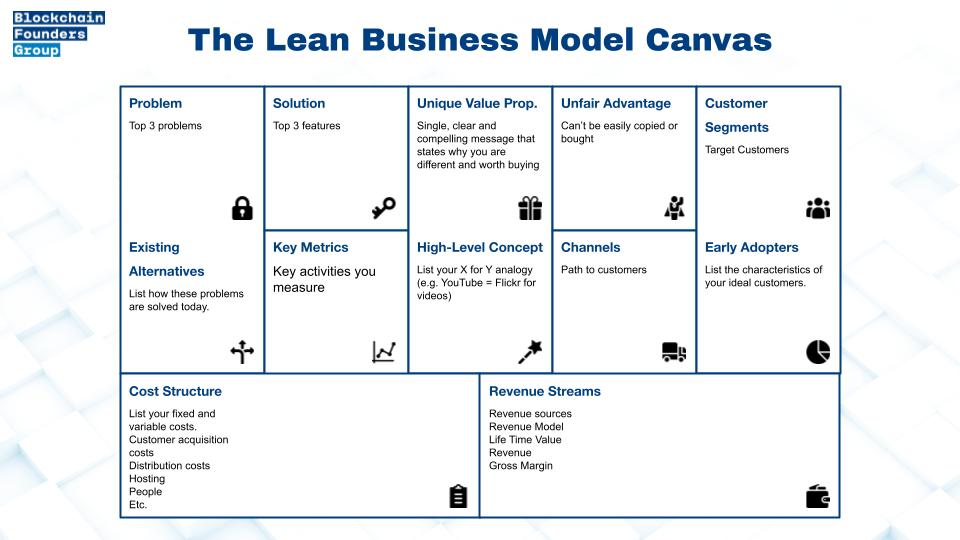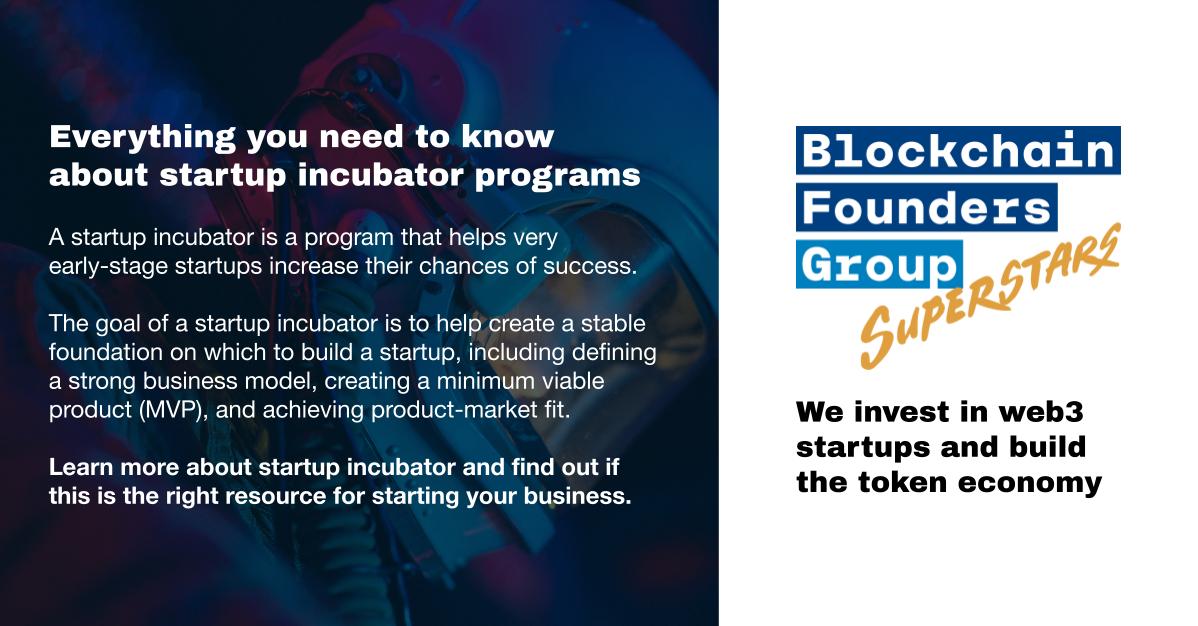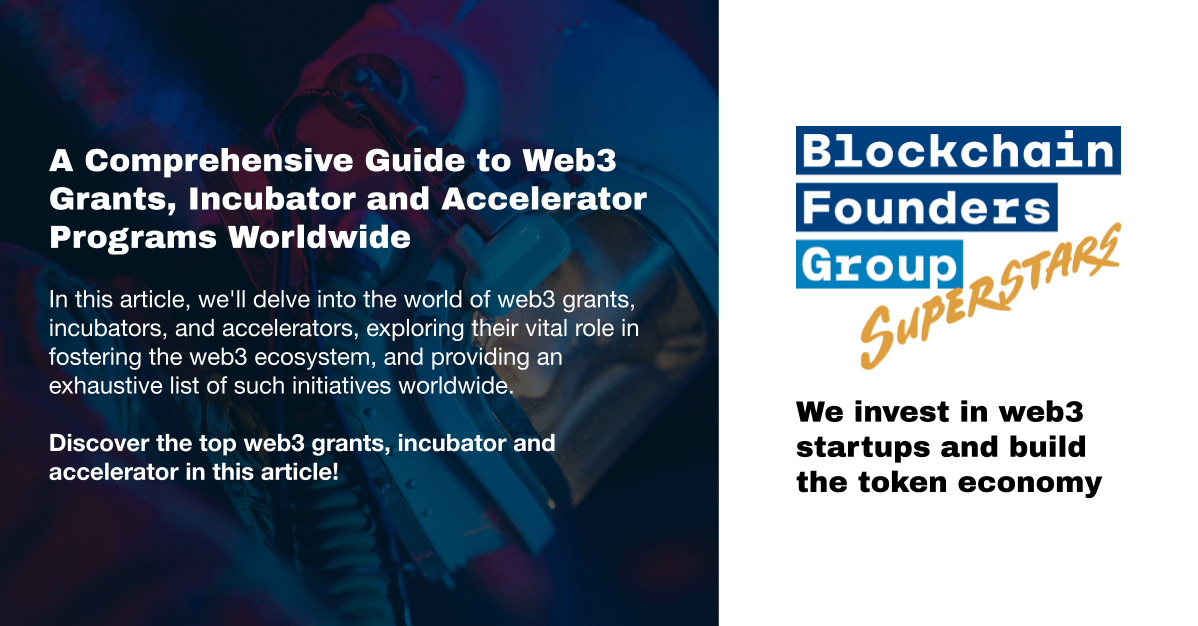How to Start And Execute a Web3 Startup Step by Step
In this article, we will go step by step through the process of how to start and execute a startup in the Web3 sector. This includes evaluating your idea, developing a business plan, building your team and a minimal product, executing your launch, marketing and sales, and of course, funding your Web3 startup. In the following table of contents you can go directly to the part that is relevant for you. - Author: Jona Hauch
The Web3 sector and its potential
Web3, also known as the decentralized web or the blockchain web, is the next generation of the internet that is mainly about two things:
1. Next generation of digitalization
2. Next generation of decentralization
Additionally, it is a secure, permissionless and transparent way of storing and sharing data. The decentralization part is possible thanks through it’s set of protocols and technologies that enable peer-to-peer interactions without relying on centralized intermediaries, such as corporations or governments.
The potential of Web3 is enormous, as it can transform many industries by enabling new types of decentralized applications, such as decentralized finance (DeFi), decentralized social networks, decentralized marketplaces, and many more. Web3 can provide greater control and ownership to users, reduce censorship and privacy violations, and enable new types of economic models.
Additionally, Web3 is the next step in digital transformation through fungible and non-fungible tokenization. This allows us to digitize, use and automate any type of document, certificate, currency, etc., in a more efficient and secure way than traditional methods. Get an overview of Web3 business models in our article: The predominant Web3 business models.
Startups play a crucial role in the development and adoption of Web3. They can identify problems and opportunities in the market, develop innovative solutions, and bring them to market quickly. Startups can also experiment with new business models and technologies, and iterate quickly based on user feedback. So let's look no further and begin the journey!
Identify the problem and potential solution

Our suggestion is to do a market validation, followed by a quick go-to-market strategy, instead of doing endless academical market research. What's important is defining the market and target group, ensuring that the market is large enough to increase business and investor appeal, and figuring out how to reach product-market fit.
The ultimate proof of product-market fit is having enough paying customers with high demand that makes it difficult to meet their needs. Until reaching this point, one can approximate market demand through social media metrics, letter of intents (LOIs) in B2B, or waitlist sizes.
Our specific approach is to quickly launch within a few weeks and then continuously gather user feedback through interviews, surveys have rather limited benefits. This is also known as the Mom Test. Here are the general steps to follow:
- Understand the Web3 ecosystem: The first step is to gain a deep understanding of the Web3 ecosystem, including its key players, trends, and challenges. This can be done by reading industry publications, attending conferences, and joining online communities.
- Identify pain points and potential solutions: The next step is to identify pain points, in the sector that you are focusing on, that potential users are experiencing which you want to solve.
- Create and validate the solution: Finally, it's important to create a first version of your solution (MVP) and then validate the solution with potential users to ensure that it meets their needs and solves the identified pain point.
By following these steps, a Web3 startup can identify a problem, develop a unique solution, and validate it with potential users. This approach can increase the chances of success for the startup by addressing a real pain point in the market.
What if the market shows no interest in your solution?
- Understand why: Seek to understand why the market is not responding to your solution by conducting interviews with potential customers or stakeholders. By gathering feedback and insights, you can identify potential issues or barriers that are preventing your solution from gaining traction.
- Pivot: If necessary, be willing to pivot your approach or direction entirely. This can be a difficult decision to make, but it can also be a necessary one if your current approach is not working. Consider new markets, different business models, or even a different product or service entirely.
Develop a business plan for your Web3 startup idea
Developing a business plan, including the target market and user persona is a crucial step in developing a Web3 startup.
Here are the steps involved in this process:
- Define the target market: Identify the specific group of people or organizations that the product or service will serve.
- Create a user persona: Develop a detailed profile of the ideal user, including their demographics, behavior, goals, and pain points. This will help to understand your ideal customer better and tailor your product and communication specifically to your target group
Once the target market and user persona have been defined, the next step is to identify competitors and market trends. This involves:
- Identifying competitors: Research existing startups that offer similar products or services, and analyze their strengths, weaknesses, and market positioning.
- Understanding market trends: Stay up-to-date with trends and changes in the Web3 ecosystem, such as new technologies or regulations, and analyze how they might affect your startup's business.
The next step is to determine revenue streams and the business model. This involves:
- Identifying revenue streams: Identify the ways in which the startup will generate revenue, such as subscription fees or transaction fees.
- Developing the business model: Determine the overall strategy for the startup, including how it will generate revenue, how it will acquire and retain users, and how it will differentiate itself from competitors.
Finally, the startup needs to create a financial plan and projections. This involves:
- Estimating startup costs: Determine the initial costs of developing and launching the product or service.
- Projecting revenue and expenses: Develop a financial model that projects future revenue and expenses based on assumptions about the market and user adoption.
By following these steps, a Web3 startup can develop a clear understanding of its target market, competitors, revenue streams, and financial projections, which are crucial for success in the Web3 ecosystem.

Figure 1: The lean business model canvas, click here to download the template as a word document.
The Business Model Lean Canvas can be a valuable tool for you to use when developing your business plan. The canvas is a template divided into nine sections: Customer Segments, Value Proposition, Channels, Customer Relationships, Revenue Streams, Key Activities, Key Resources, Key Partnerships, and Cost Structure. This way, you get a comprehensive overview of your business model on just one page, which helps you focus on the most important points.
Please feel free to download and share the lean business model canvas template as Word document: Click to download the template now.
Build a strong team

Starting a venture is best approached by forming a minimum viable team of two or three co-founders, although it is also possible to do it alone. Find out what is best for you in our article Solo Founder vs Founding Team.
To build step a step a successful team for your Web3 startup, you should identify the roles and skills needed. Here are some general roles and skills needed for a Web3 startup that ideally should already be covered by the founders:
- Development: Experienced blockchain developers who can design and build the core technology behind the product or service.
- Marketing: Professionals who can develop and execute effective marketing strategies to acquire and retain users.
- Business Development: Individuals who can establish partnerships and relationships with other businesses and investors.
Further skills that are often needed, but usually don’t require a full-time staff are designers, lawyers, and accountants.
Once the necessary roles have been identified, it's time to recruit team members with the needed experience and skills. It should be also considered if specific sector knowledge in Web3 and/or your specific target sector is needed. To find potential team members you can start using your own networks, do job postings, referrals, and go to networking events. In case you are looking for a co-founder you can check our article: How to Find Your Ideal Co-Founder.
Once you've started hiring team members, remember to develop a strong culture and team dynamics that can be critical to a startup's success. This involves creating a shared vision, values, and goals for the team, as well as fostering a collaborative and supportive work environment. Regular team-building activities and open communication channels can also help to build a strong team dynamic.
Build a Minimum Viable Product (MVP)
The next critical step for Web3 startups is to build a Minimum Viable Product (MVP), which helps to validate the product or service before investing too much time and resources. Here are the steps to follow:
- Define the MVP based on user feedback and market research: Based on the results of your market research and feedback from potential users, define the minimum set of features and functionalities that are essential for the MVP. Focus on solving the core problem and providing a valuable user experience.
- Develop the MVP using agile methodology: Develop the MVP using an agile methodology that involves iterative development and continuous feedback from users. Start with a basic prototype and add new features and functionality based on user feedback.
- Test the MVP with a small group of users and iterate: Test the MVP with a small group of users to gather feedback and identify areas for improvement. Iterate and make changes based on the feedback to improve the user experience and refine the product.
By following these steps, you can create an MVP that addresses the core problem and provides value to users. It also allows you to gather feedback from users early on and iterate quickly, leading to a better final product.
Launch and Scale 🚀
After developing and testing the MVP, it's time to launch the product and start scaling the business. Here are the steps to follow:
- Develop a marketing and launch plan: Develop a marketing and launch plan that includes messaging, target audience, channels, and timeline. Use the insights gathered from market research and user testing to inform your plan.
- Launch the product and gather user feedback: Launch the product and gather feedback from users through surveys, feedback forms, and social media. Monitor user engagement and satisfaction, and address any issues or bugs quickly.
- Analyze data and iterate: Analyze the data gathered from user feedback and engagement to identify areas for improvement and iterate the product. Use data analytics tools to track key metrics such as user acquisition, retention, and engagement.
- Develop a plan to scale the product and business: Based on the data gathered, develop a plan to scale the product and business. This may include expanding the user base, adding new features and functionality, and exploring new revenue streams.
By following these steps, you can launch the product successfully and start growing the business. Regularly gathering and analyzing user feedback and data will help you make informed decisions and improve the product over time. Developing a plan to scale the product and business will ensure long-term success and growth.
Fundraising
If you're looking to scale your business and achieve long-term success, fundraising is an essential component. Follow these steps to get started:
- Determine the funding needed to grow the business: Assess the current financial needs of the business and the amount of funding needed to achieve your goals. This will depend on factors such as the stage of the business, revenue streams, and growth potential.
- Develop a fundraising plan and identify potential investors: Develop a fundraising plan that includes investment rounds, target investors, investment size, and timeline. Identify potential investors who are interested in Web3 startups or have experience in the industry. Consider participating in accelerators or incubators like BFG Superstars to connect with investors and gain exposure.
- Prepare a pitch deck and present to investors: Create a pitch deck that outlines the problem you are solving, the solution, business model, team, and financials. Use visuals and data to support your pitch and make it memorable.
- Negotiate terms and close the funding round: Once you receive offers from investors, negotiate terms such as the valuation, equity, and board seats. Ensure that the terms align with the goals and values of the business.
By following these steps, you can secure funding to grow the business and achieve your goals. Be persistent and focused on building relationships with potential investors, and remember to present a compelling story that aligns with their investment thesis.
Conclusion
Starting a Web3 startup requires a deeper understanding of the technology, market, and user needs. Here are some final thoughts and considerations to keep in mind:
- The Web3 ecosystem is constantly evolving, and it's important to stay up to date with the latest technologies and trends to remain competitive and deliver innovative solutions.
- Starting with a minimum viable team and then building a strong one with diverse skills and expertise is essential for the success of the startup. Look for team members who are passionate about what they do and have experience in relevant industries.
- User needs and feedback should be at the core of the product development process. Regularly gather feedback from users and use it to improve the product and user experience.
- Starting a Web3 startup requires flexibility and a willingness to pivot if needed. Be open to change and willing to adjust the business model or product based on feedback and market trends.
- Collaboration with other Web3 startups and industry players can lead to valuable partnerships, shared knowledge, and ecosystem growth.
By considering these factors, Web3 startups can increase their chances of success and achieve their goals. It's an exciting time to be part of the Web3 ecosystem, and with the right approach and mindset, startups can make a significant impact and contribute to the growth of the industry.

About Blockchain Founders Group
Blockchain Founders Group (BFG) is the driving force behind web3 innovation. As a company builder, we bring together a team of blockchain visionaries, experienced entrepreneurs, and industry experts, all committed to nurturing emerging talent. Our BFG acceleration programs serve as your springboard for launching blockchain startups, transforming concepts into reality in just 2-3 months. Each cohort develops 5-8 unique web3 ideas, and selected projects will be financially supported with 70,000 - 100,000 EUR, along with access to our extensive network. Join us in shaping the future of web3!
Stay updated by connecting with us on LinkedIn, Medium, Twitter, and YouTube.
Contact: Max Zheng, Director of Investments, max.zheng@blockchain-founders.io
Subscribe by email
Share this
You May Also Like
These Related Stories
Startup Incubator vs Accelerator vs Company Builder vs Venture Studio - What is The Right One For Me?

What is a Startup Incubator? Everything You Need to Know


No Comments Yet
Let us know what you think